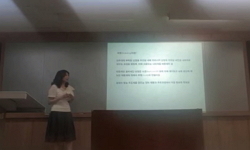Adhesive bonding is currently widely used in many industrial fields, particularly in the aeronautics sector. Despite its advantages over mechanical joints such as riveting and welding, adhesive bonding is mostly used for secondary structures due to it...
http://chineseinput.net/에서 pinyin(병음)방식으로 중국어를 변환할 수 있습니다.
변환된 중국어를 복사하여 사용하시면 됩니다.
- 中文 을 입력하시려면 zhongwen을 입력하시고 space를누르시면됩니다.
- 北京 을 입력하시려면 beijing을 입력하시고 space를 누르시면 됩니다.

Effect of modifying the thickness of the plate at the level of the overlap length in the presence of bonding defects on the strength of an adhesive joint
한글로보기https://www.riss.kr/link?id=A109107958
- 저자
- 발행기관
- 학술지명
- 권호사항
-
발행연도
2024
-
작성언어
English
- 주제어
-
등재정보
SCOPUS,ESCI
-
자료형태
학술저널
-
수록면
83-103(21쪽)
- DOI식별코드
- 제공처
-
0
상세조회 -
0
다운로드
부가정보
다국어 초록 (Multilingual Abstract)
Adhesive bonding is currently widely used in many industrial fields, particularly in the aeronautics sector. Despite its advantages over mechanical joints such as riveting and welding, adhesive bonding is mostly used for secondary structures due to its low peel strength; especially if it is simultaneously exposed to temperature and humidity; and often presence of bonding defects. In fact, during joint preparation, several types of defects can be introduced into the adhesive layer such as air bubbles, cavities, or cracks, which induce stress concentrations potentially leading to premature failure. Indeed, the presence of defects in the adhesive joint has a significant effect on adhesive stresses, which emphasizes the need for a good surface treatment. The research in this field is aimed at minimizing the stresses in the adhesive joint at its free edges by geometric modifications of the ovelapping part and/or by changing the nature of the substrates. In this study, the finite element method is used to describe the mechanical behavior of bonded joints. Thus, a three-dimensional model is made to analyze the effect of defects in the adhesive joint at areas of high stress concentrations. The analysis consists of estimating the different stresses in an adhesive joint between two 2024-T3 aluminum plates. Two types of single lap joints(SLJ) were analyzed: a standard SLJ and another modified by removing 0.2 mm of material from the thickness of one plate along the overlap length, taking into account several factors such as the applied load, shape, size and position of the defect. The obtained results clearly show that the presence of a bonding defect significantly affects stresses in the adhesive joint, which become important if the joint is subjected to a higher applied load. On the other hand, the geometric modification made to the plate considerably reduces the various stresses in the adhesive joint even in the presence of a bonding defect.
동일학술지(권/호) 다른 논문
-
A prototype to improve endurance of solar powered aircraft using MPPT and rechargeable battery
- Techno-Press
- Leo Paul Amuthan George
- 2024
- SCOPUS,ESCI
-
- Techno-Press
- B. Boukert
- 2024
- SCOPUS,ESCI
-
Enhancing air traffic management efficiency through edge computing and image-aided navigation
- Techno-Press
- Pradum Behl
- 2024
- SCOPUS,ESCI
-
- Techno-Press
- Nazira Mohamed
- 2024
- SCOPUS,ESCI




 ScienceON
ScienceON




